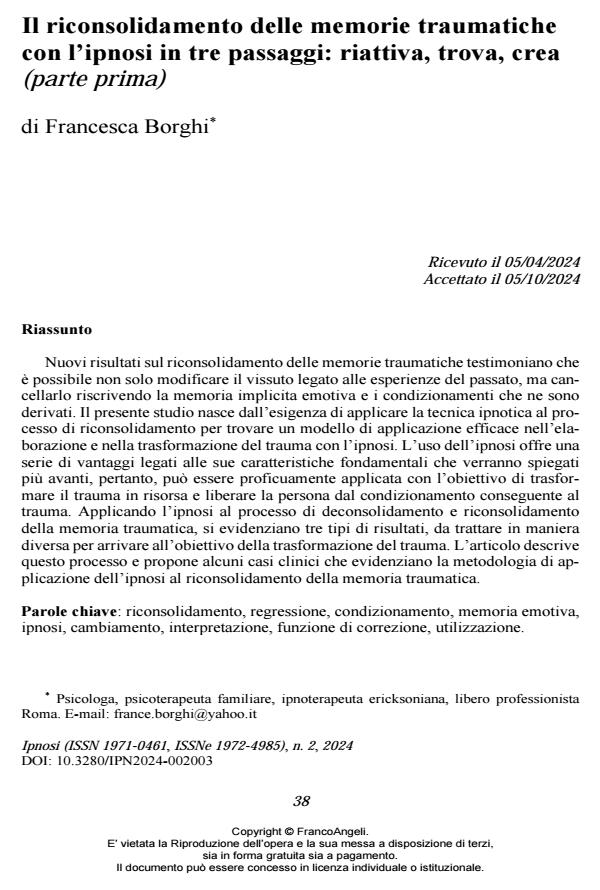The reconsolidation of traumatic memories through hypnosis: A three-step process of reactivation, identification, and creation
Journal title IPNOSI
Author/s Francesca Borghi
Publishing Year 2025 Issue 2024/2
Language Italian Pages 7 P. 38-44 File size 162 KB
DOI 10.3280/IPN2024-002003
DOI is like a bar code for intellectual property: to have more infomation
click here
Below, you can see the article first page
If you want to buy this article in PDF format, you can do it, following the instructions to buy download credits

FrancoAngeli is member of Publishers International Linking Association, Inc (PILA), a not-for-profit association which run the CrossRef service enabling links to and from online scholarly content.
Recent research on the reconsolidation of traumatic memories indicates that it is possible not only to alter the emotional experiences associated with past events but also to erase them by rewriting implicit emotional memories and the conditioning that stems from them. This study aims to apply hypnotic techniques to the reconsolidation process in order to develop an effective model for processing and transforming trauma through hypnosis. Hypnosis offers several advantages due to its inherent characteristics, which will be discussed in detail. As a result, it can be successfully used to transform trauma into a resource and free individuals from the conditioning imposed by trauma. Through the application of hypnosis in the deconsolidation and reconsolidation of traumatic memories, three distinct phenomena emerge, each requiring a tailored approach to achieve the transformation of trauma. This article outlines this process and presents clinical cases that demonstrate the methodology of applying hypnosis to the reconsolidation of traumatic memories.
Keywords: reconsolidation, regression, conditioning, emotional memory, hypnosis, transformation, interpretation, corrective function, utilization.
Francesca Borghi, Il riconsolidamento delle memorie traumatiche con l’ipnosi in tre passaggi: riattiva, trova, crea (parte prima) in "IPNOSI" 2/2024, pp 38-44, DOI: 10.3280/IPN2024-002003